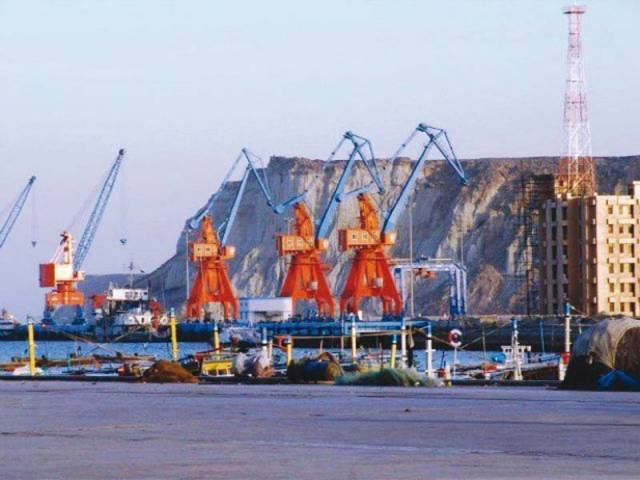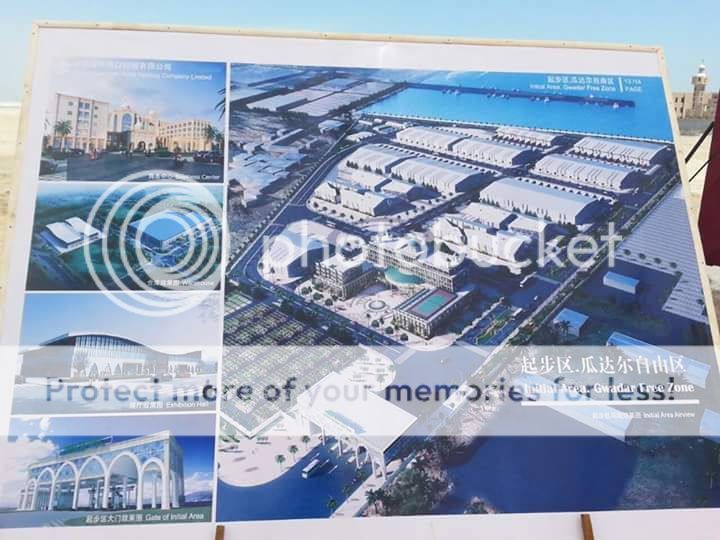ghazi52
PDF THINK TANK: ANALYST

- Joined
- Mar 21, 2007
- Messages
- 104,022
- Reaction score
- 106
- Country
- Location
...................
Industrial potential: Deep sea port in Gwadar would turn things around

PHOTO: REUTERS
KARACHI: The Gwadar Port holds immense potential for industrial investment in view of the opportunities offered through the establishment of a deep sea port, which is capable of accommodating large vessels of up to 70,000 Deadweight Tonnage (DWT), said China Overseas Port Holding Company (COPHC) Chairman Zhang Baozhong.
During his visit to the Karachi Chamber of Commerce and Industry (KCCI), he informed the gathering that the Makran Coastal Highway (N-20) had been completed, which had substantially reduced distance between Karachi and Gawdar.
“Upon completion, the Gwadar Port would be a gateway for businesses as it would cater to all types of international commercial activities,” he added.
“The COPHC was granted 40 years concession in 2013 to manage and operate the Gwadar Port and Gwadar Free Zone and it had been the objective of the COPHC to develop the region’s most strategically well-located port with state-of-the-art facilities,” remarked Baozhong.
“It has been mostly the local workforce and contractors that have been engaged in carrying out the development work at the port and they are doing an excellent job.”
Baozhong added that the largest free zone, covering an area of 968,000 sq metre, for warehousing, manufacturing, international purchasing, transit and distribution trans-shipment, commodity display and supporting services had also been established. “The free zone is exempted from federal, provincial and local taxes and would make Gwadar an attractive port for marine trade.”
“COPHC also intends organising an international fair every year in Gwadar, in collaboration with the Governments of Pakistan and China to highlight the potential of this important port which would become the distribution centre for the Middle East market.“The Gwadar Port will prove to be a game-changer for Pakistan and would help alleviate poverty and generate employment for local inhabitants,” said the Businessmen Group Vice Chairman and KCCI former president Anjum Nisar.
“The COPHC also plans to establish the deepest berth of 20 metres; this means that some of the largest vessels would be berthed at the port, bringing in more prosperity not only for Pakistan, but for the entire region,” added Nisar.
...
Industrial potential: Deep sea port in Gwadar would turn things around

PHOTO: REUTERS
KARACHI: The Gwadar Port holds immense potential for industrial investment in view of the opportunities offered through the establishment of a deep sea port, which is capable of accommodating large vessels of up to 70,000 Deadweight Tonnage (DWT), said China Overseas Port Holding Company (COPHC) Chairman Zhang Baozhong.
During his visit to the Karachi Chamber of Commerce and Industry (KCCI), he informed the gathering that the Makran Coastal Highway (N-20) had been completed, which had substantially reduced distance between Karachi and Gawdar.
“Upon completion, the Gwadar Port would be a gateway for businesses as it would cater to all types of international commercial activities,” he added.
“The COPHC was granted 40 years concession in 2013 to manage and operate the Gwadar Port and Gwadar Free Zone and it had been the objective of the COPHC to develop the region’s most strategically well-located port with state-of-the-art facilities,” remarked Baozhong.
“It has been mostly the local workforce and contractors that have been engaged in carrying out the development work at the port and they are doing an excellent job.”
Baozhong added that the largest free zone, covering an area of 968,000 sq metre, for warehousing, manufacturing, international purchasing, transit and distribution trans-shipment, commodity display and supporting services had also been established. “The free zone is exempted from federal, provincial and local taxes and would make Gwadar an attractive port for marine trade.”
“COPHC also intends organising an international fair every year in Gwadar, in collaboration with the Governments of Pakistan and China to highlight the potential of this important port which would become the distribution centre for the Middle East market.“The Gwadar Port will prove to be a game-changer for Pakistan and would help alleviate poverty and generate employment for local inhabitants,” said the Businessmen Group Vice Chairman and KCCI former president Anjum Nisar.
“The COPHC also plans to establish the deepest berth of 20 metres; this means that some of the largest vessels would be berthed at the port, bringing in more prosperity not only for Pakistan, but for the entire region,” added Nisar.
...

















